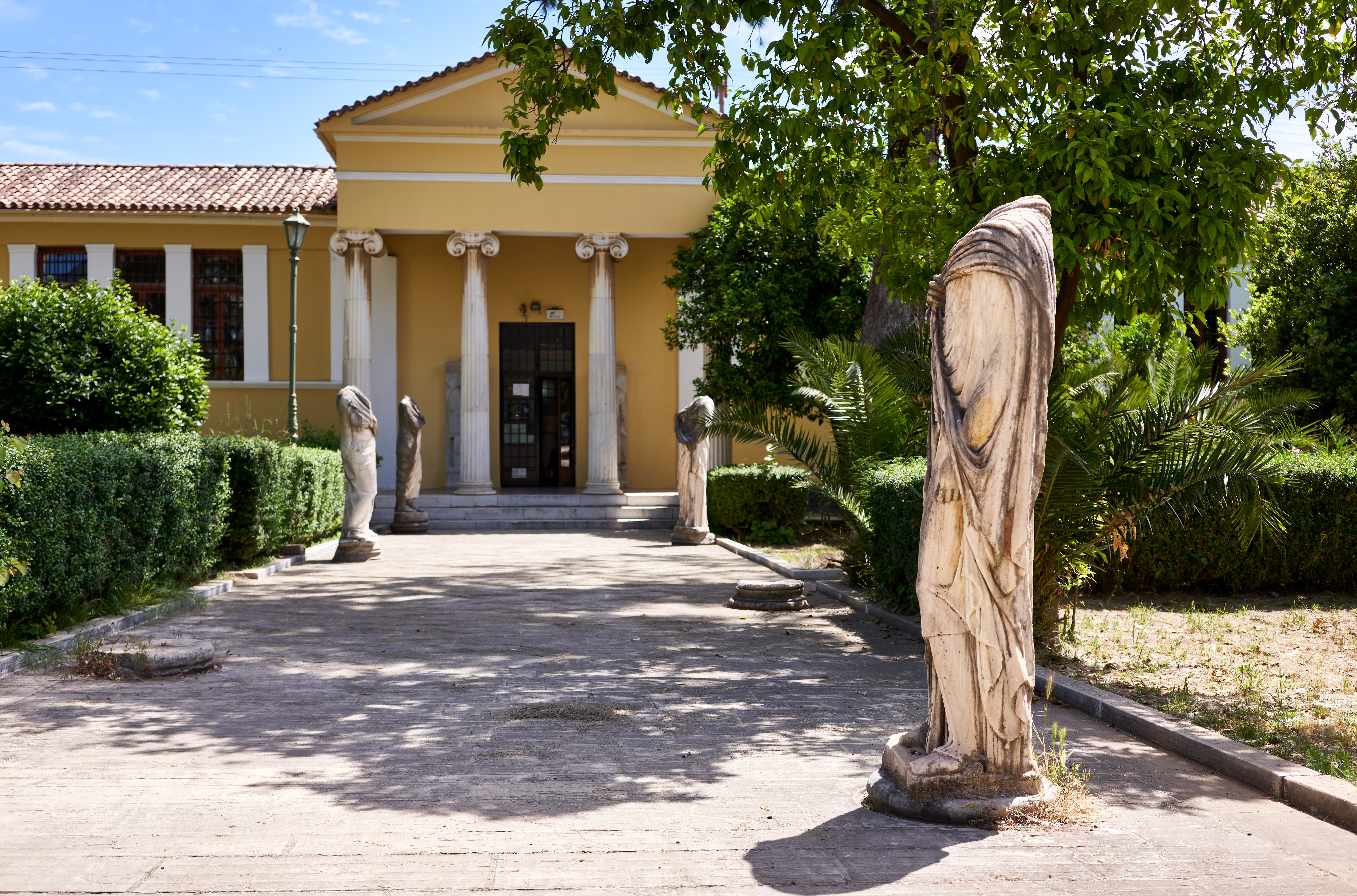Archaeological Museum Of Sparta on:
[Wikipedia]
[Google]
[Amazon]
 The Archaeological Museum of Sparta ( el, Αρχαιολογικό Μουσείο Σπάρτης), founded in 1875, is a museum in
The Archaeological Museum of Sparta ( el, Αρχαιολογικό Μουσείο Σπάρτης), founded in 1875, is a museum in
Themos Ath. Archaeological Museum Of Sparta, on ''Odysseus''
in
Hellenic Ministry of Culture and Tourism
in Greek
 The Archaeological Museum of Sparta ( el, Αρχαιολογικό Μουσείο Σπάρτης), founded in 1875, is a museum in
The Archaeological Museum of Sparta ( el, Αρχαιολογικό Μουσείο Σπάρτης), founded in 1875, is a museum in Sparta
Sparta ( Doric Greek: Σπάρτα, ''Spártā''; Attic Greek: Σπάρτη, ''Spártē'') was a prominent city-state in Laconia, in ancient Greece. In antiquity, the city-state was known as Lacedaemon (, ), while the name Sparta refer ...
, Greece
Greece,, or , romanized: ', officially the Hellenic Republic, is a country in Southeast Europe. It is situated on the southern tip of the Balkans, and is located at the crossroads of Europe, Asia, and Africa. Greece shares land borders with ...
that houses thousands of artifacts from the ancient Acropolis of Sparta and the rest of the municipality of Laconia
Laconia or Lakonia ( el, Λακωνία, , ) is a historical and administrative region of Greece located on the southeastern part of the Peloponnese peninsula. Its administrative capital is Sparta. The word ''laconic''—to speak in a blunt, con ...
. It is one of Greece's oldest archaeology museums.
The collection's pieces date from the Neolithic
The Neolithic period, or New Stone Age, is an Old World archaeological period and the final division of the Stone Age. It saw the Neolithic Revolution, a wide-ranging set of developments that appear to have arisen independently in several par ...
to the late Roman era
In modern historiography, ancient Rome refers to Roman civilisation from the founding of the city of Rome in the 8th century BC to the collapse of the Western Roman Empire in the 5th century AD. It encompasses the Roman Kingdom (753–509 BC ...
. There are seven rooms of an approximate area of which display only a small part of the collection.
History
The museum is one of Greece's oldest archaeology museums. Years after its opening, it was largely neglected with most of its pieces currently stored in warehouses. In July 2020, the Greek Minister of Culture and Sports Lina Mendoni approved plans to construct a new Archaeological Museum of Sparta and renovate the existing museum. The initiative included significant funding and promotion from theStavros Niarchos Foundation
The Stavros Niarchos Foundation (SNF) was established in 1996 to honor Greek shipping magnate Stavros Niarchos (1909–1996). Niarchos was one of the world's largest transporters of oil and owned the largest supertanker fleet of his time.
Organ ...
.
Collections
In the museum are housed finds from excavations around the prefecture of Lakonia, provided that they are not exposed in collections of the archaeological museum Gythion or Neapolis. *Room I: Stelae of Roman years. *Room II: Finds from the shrine of Artemis Orthia. *Room III: Monumental sculpture and portraiture of Roman era. *Room IV: Prehistoric finds from the wider region of Lakonia. *Room V: Samples of Roman mosaics. *Room VI: Architectonic parts of Apollo temple in Amyclae, that constitute also the more major department of collection *Room VII: Finds of Lakonian sculpture.in
Greek
Greek may refer to:
Greece
Anything of, from, or related to Greece, a country in Southern Europe:
*Greeks, an ethnic group.
*Greek language, a branch of the Indo-European language family.
**Proto-Greek language, the assumed last common ancestor ...
.References
External links
Hellenic Ministry of Culture and Tourism
in Greek
Sparta
Sparta ( Doric Greek: Σπάρτα, ''Spártā''; Attic Greek: Σπάρτη, ''Spártē'') was a prominent city-state in Laconia, in ancient Greece. In antiquity, the city-state was known as Lacedaemon (, ), while the name Sparta refer ...
Sparta
{{greece-museum-stub